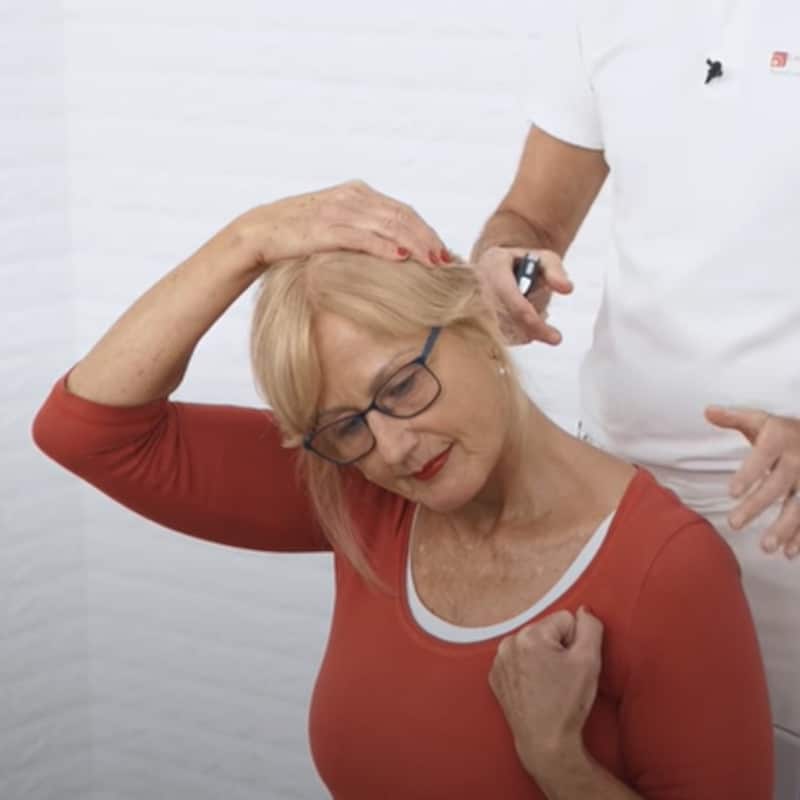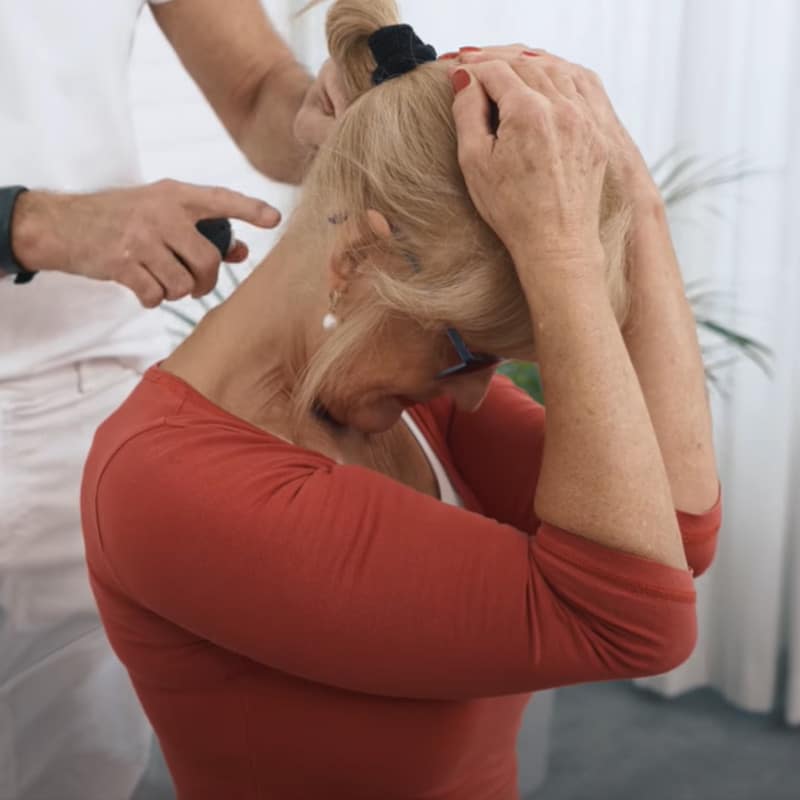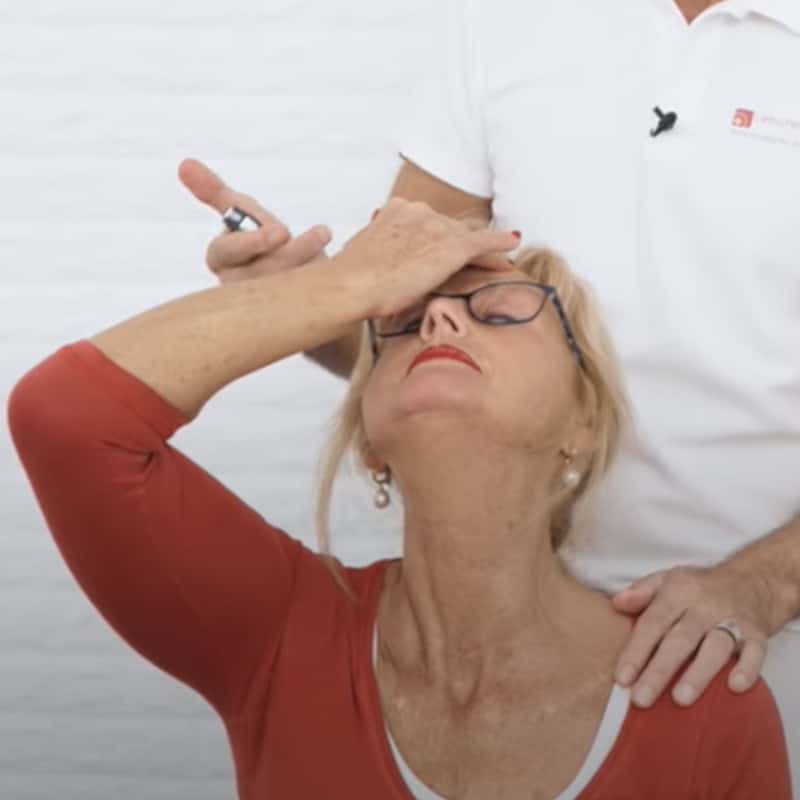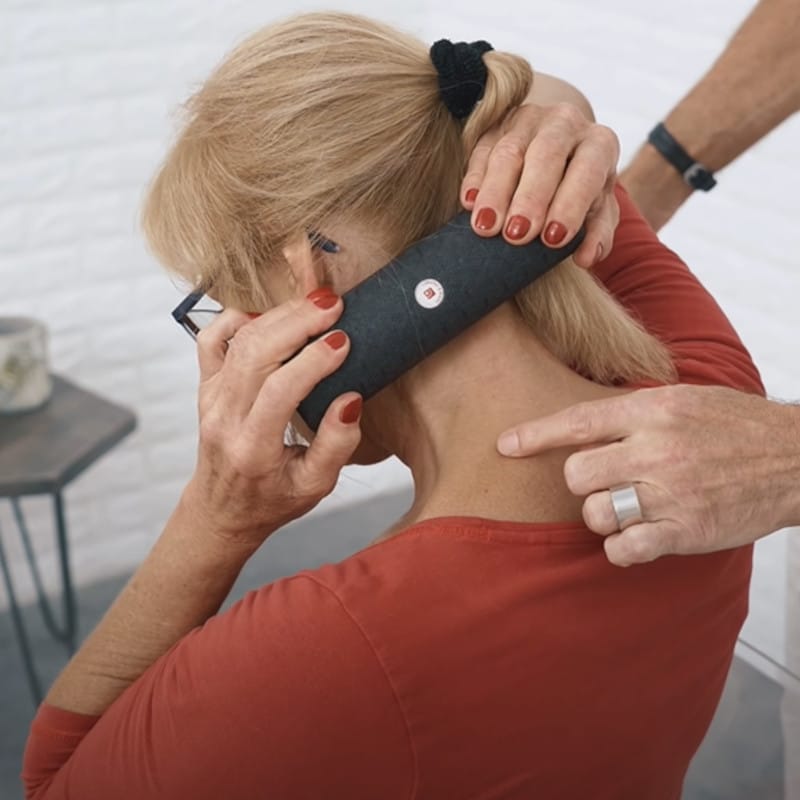The Best Foam Roller Exercises for Neck Pain
Body Part:
Neck
Equipment:
Foam Roller
Level:
Beginner
Body Part:
Neck
Equipment:
Foam Roller
Level:
Beginner
Often the result from craning or bending your neck for too long at a time (i.e., when reading or texting), neck pain is one of the most frequent discomforts we experience. Thanks to the Liebscher & Bracht pain therapy, this can be a thing of the past, though! Using three highly effective techniques — osteopressure, foam rolling and stretching — you can free yourself from pain. If you do our exercises regularly, you can even prevent further damage.
Do you have lots of tension in your neck and want to get rid of that pain right now? Then we have a short sequence of neck foam roller massages here to help you address that problem. Overall, these exercises should take around five minutes – giving you every chance to make them a regular part of your busy day. All the video information is shown below, along with some detailed exercise instructions you can read through. Read on!

Sign up for our free newsletter and discover how to manage your pain yourself. Every two weeks, we’ll deliver follow-along videos and articles to your inbox.

To begin, sit up straight on your chair, bend your left arm at the elbow and pull your left shoulder down. Turn your head 45 degrees to the left, and then place your right hand on top of your head just above your left ear. Now pull your head to the right until you feel a stretch in your oblique muscles on the left side.
Breathe in and out calmly during the stretch, and try to tuck your chin in each time you exhale to intensify the stretch a little more.
When 30 seconds are up, switch and do the same on the other side: Right arm down, turn your head to the right, the left hand reaches over your head and pulls it downward. Keep breathing calmly and use the exhale to intensify your stretch a little more each time.
With this exercise, you will feel most of the stretching over towards the back of your neck. Now slowly return your body to a neutral position and perform the exercise for your right side as well: Bend your right arm at the elbow and pull your right shoulder down. Reach over with your left hand and pull your head to the left.

Sitting straight up, reach up with both hands and pull your head forward and down, so that your chin sinks toward your chest. During this movement, your thoracic spine should still stay absolutely upright.
As you pull down, you will feel the stretch at the back, in the middle of your neck.
You will feel a burn as the small extensor muscles here open up – but remember to keep that pain down under ten on your personal pain scale. After about 30 seconds, you can release and sit back up.

Now, still holding your head straight, place one hand on your forehead and gently push your head backward so you feel the stretch in your throat. Be sure to move your head and your throat backwards – not just your head. Use your deep breathing again to help relax the whole area, including your vocal cords. Hold this stretch for 30 seconds and then slowly release and sit up straight once more.
If you feel this is not enough, or want to maximize the relaxing effect of this one exercise sequence on your neck muscles, try to stay in each individual stretch for up to two- or two and a half minutes. However, make sure you stay below ten on your personal pain scale, and always take your time getting out of each stretch slowly.

For this exercise, you will need to use a foam roller. The correct one to use is the mini foam roller from our foam rolling massage set.
Now take your mini foam roller and position it high on the left side of your neck, just below your ear. Holding the mini roller just slightly slanted, use both hands to slowly roll it along your neck. Work very slowly along all the way from the top.
Apply plenty of pressure as you do this and keep the roller moving slowly until you finally reach your shoulder blade.
And now do the same routine on the other side. Slanting the neck foam roller again and rolling slowly down and down, loosening any tension in those neck muscles as you roll them out. Not only will this bring relaxation to the neck region, but it will also improve the blood circulation.
Now our four-minute exercise is done. So you can just sit back and relax.
If you can manage to do these exercises a few times during the day, the positive benefits will start to add up. Where you have time, you can also spend a little longer on each part of these exercises. And again, the positive benefits for your neck health will become even more apparent.

Sign up for our free newsletter and discover how to manage your pain yourself. Every two weeks, we’ll deliver follow-along videos and articles to your inbox.
Then we would be happy if you shared it with your friends: